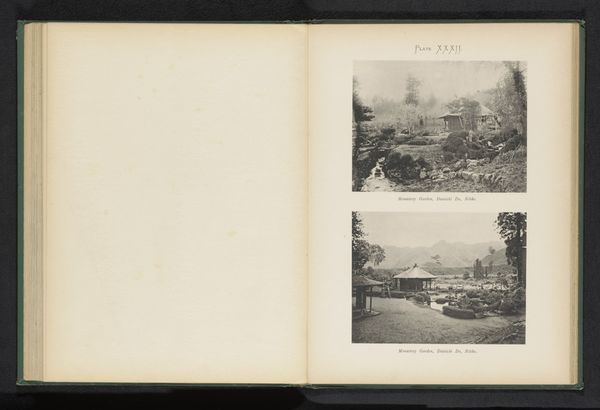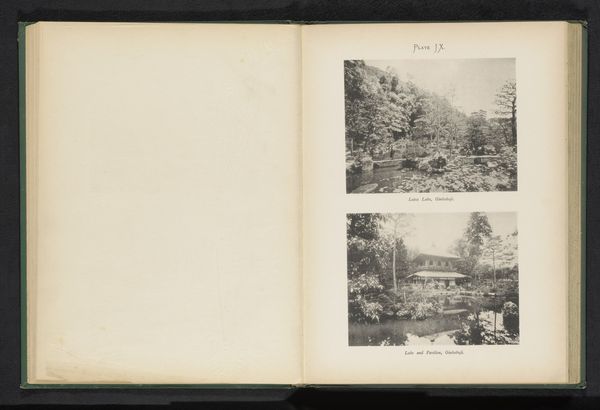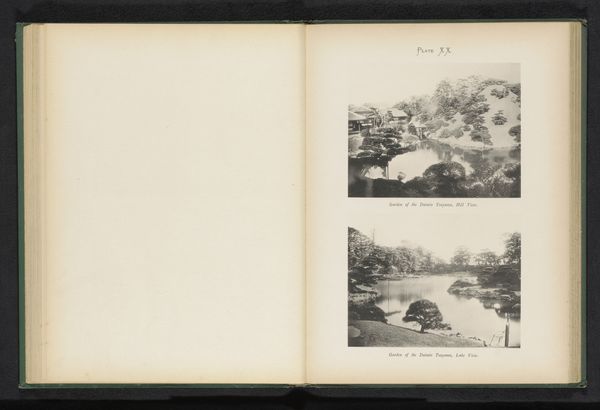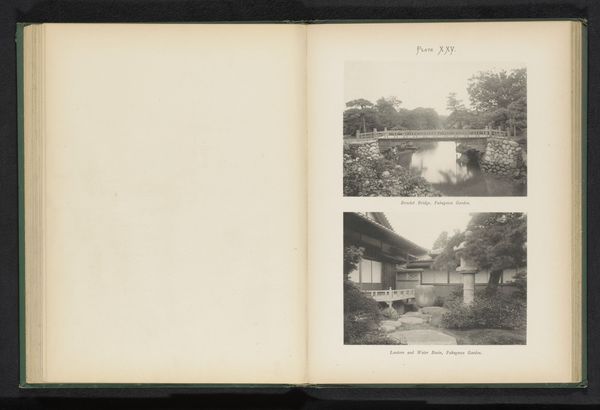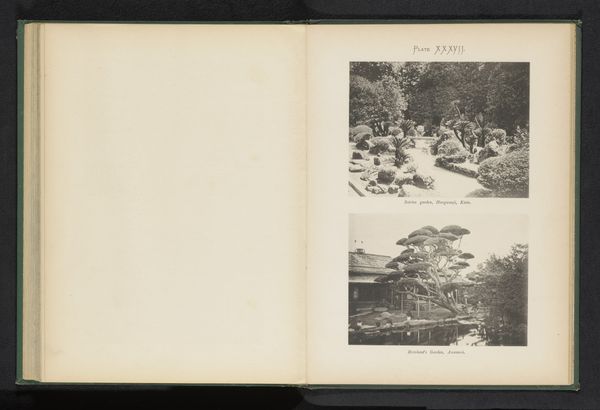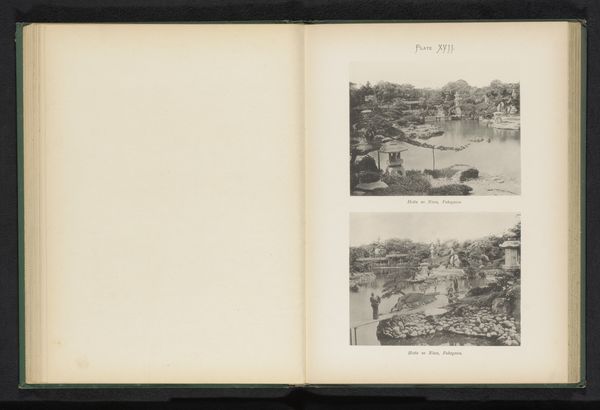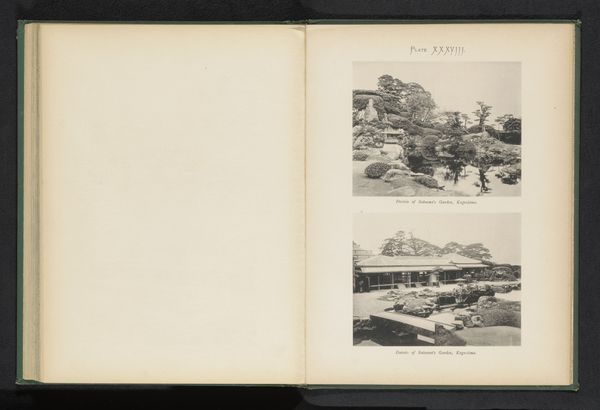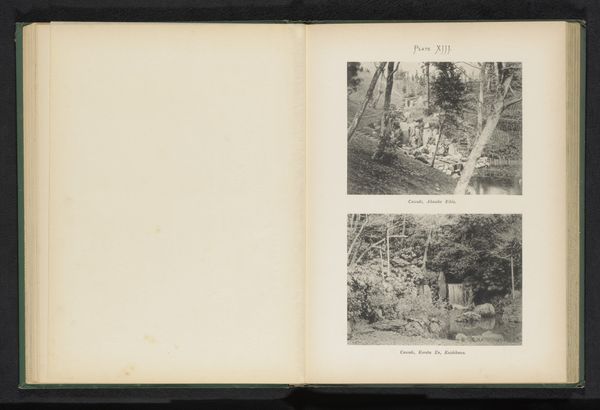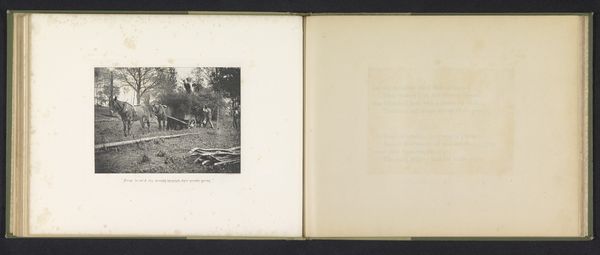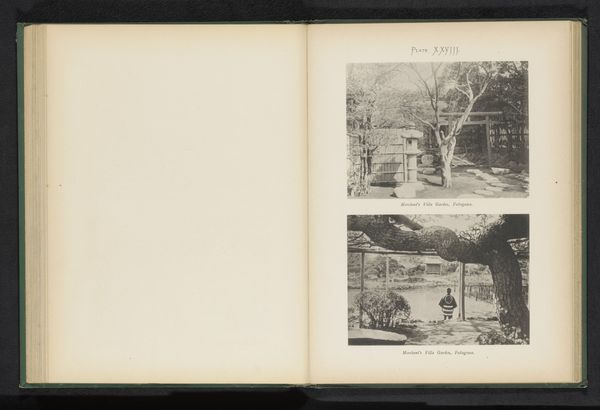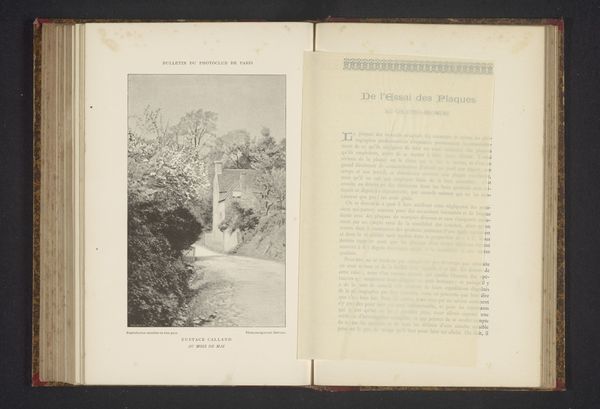
print, photography, albumen-print
# print
#
landscape
#
photography
#
orientalism
#
albumen-print
Dimensions: height 356 mm, width 258 mm
Copyright: Rijks Museum: Open Domain
Editor: Here we have a fascinating albumen print from before 1893, by Kazumasa Ogawa, titled "Twee gezichten op de Mangwanji tuinen in Nikko, Japan"—"Two views of the Mangwanji gardens in Nikko, Japan." The twin landscape views presented side-by-side create a beautiful, tranquil effect. I'm struck by the composition, specifically the contrasting arrangements of water and vegetation in each scene. What do you see in this piece? Curator: Precisely. Observe the photographer's deliberate use of tonal gradations. The careful arrangement of light and shadow defines forms, creating depth within the photographic plane. Note how the textures, varying from the smooth surfaces of water to the rough bark of trees, are rendered with remarkable clarity. How does the compositional structure guide your eye? Editor: Well, the upper image draws me along the winding water path, whereas the lower image has more layers, like I'm looking into a miniature world. Are the different depths in each image important? Curator: They certainly are. The variations invite closer inspection of Ogawa's calculated arrangements. The linear perspective creates a sense of recession into space, effectively utilizing the picture plane. Do you see any repeating motifs? Editor: Now that you mention it, there are rock features in both compositions. Perhaps, these are intended to ground the composition? Curator: Precisely. The contrasting orientations of forms add visual interest, but are held in tension via repeated forms and tonalities. Ogawa clearly thought a great deal about visual organisation. Editor: This approach offers an insight into how photography can be perceived beyond its mere subject, to the underlying formal elements that guide the eye and understanding. Thank you. Curator: Indeed, looking at the underlying composition helps understand not only the subject, but the artist’s aesthetic intention and, ultimately, an epoch’s ways of seeing.
Comments
No comments
Be the first to comment and join the conversation on the ultimate creative platform.
